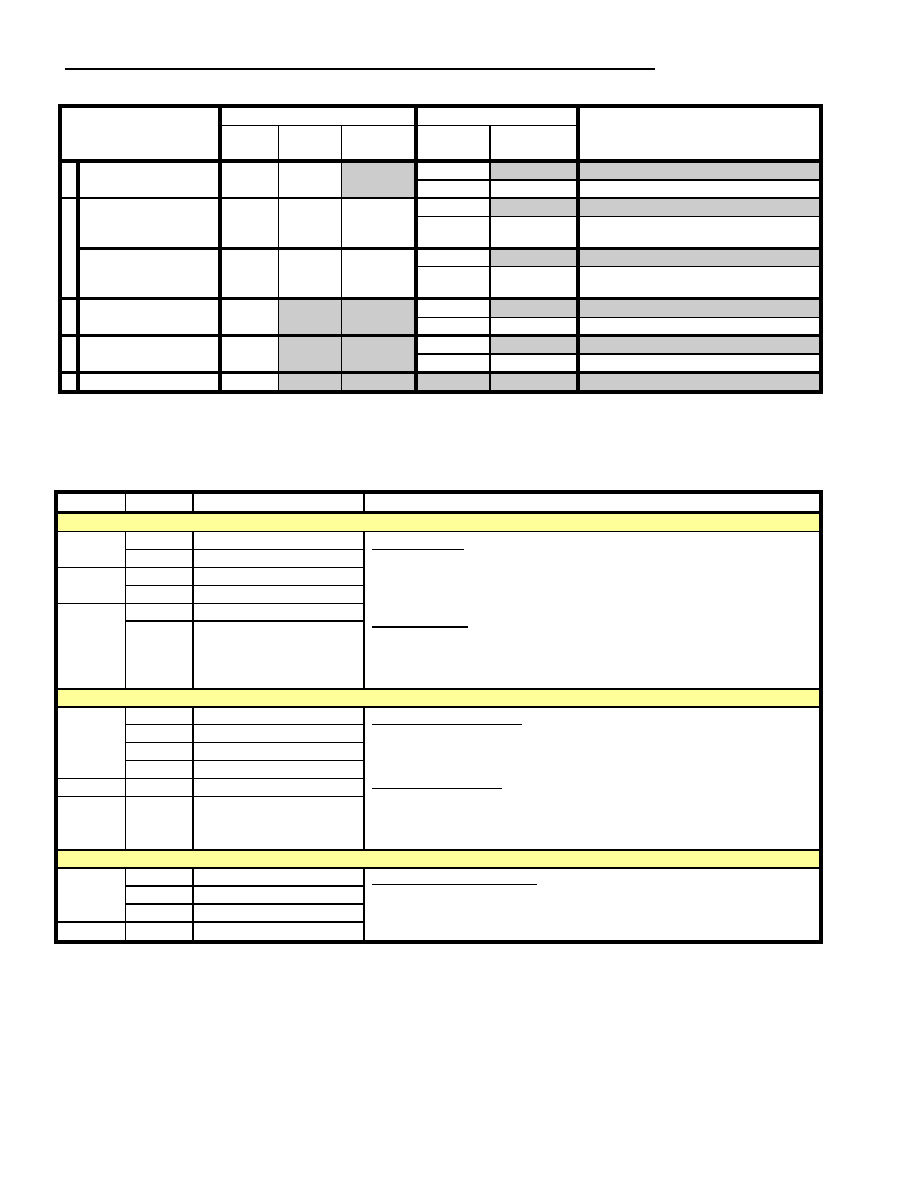- 您現(xiàn)在的位置:買賣IC網 > PDF目錄1916 > DS34S132GN+ (Maxim Integrated Products)IC TDM OVER PACKET 676-BGA PDF資料下載
參數(shù)資料
| 型號: | DS34S132GN+ |
| 廠商: | Maxim Integrated Products |
| 文件頁數(shù): | 59/194頁 |
| 文件大小: | 0K |
| 描述: | IC TDM OVER PACKET 676-BGA |
| 產品培訓模塊: | Lead (SnPb) Finish for COTS Obsolescence Mitigation Program |
| 標準包裝: | 40 |
| 功能: | TDM-over-Packet(TDMoP) |
| 接口: | TDMoP |
| 電路數(shù): | 1 |
| 電源電壓: | 1.8V, 3.3V |
| 工作溫度: | -40°C ~ 85°C |
| 安裝類型: | 表面貼裝 |
| 封裝/外殼: | 676-BGA |
| 供應商設備封裝: | 676-PBGA(27x27) |
| 包裝: | 管件 |
| 其它名稱: | 90-34S13+2N0 |
第1頁第2頁第3頁第4頁第5頁第6頁第7頁第8頁第9頁第10頁第11頁第12頁第13頁第14頁第15頁第16頁第17頁第18頁第19頁第20頁第21頁第22頁第23頁第24頁第25頁第26頁第27頁第28頁第29頁第30頁第31頁第32頁第33頁第34頁第35頁第36頁第37頁第38頁第39頁第40頁第41頁第42頁第43頁第44頁第45頁第46頁第47頁第48頁第49頁第50頁第51頁第52頁第53頁第54頁第55頁第56頁第57頁第58頁當前第59頁第60頁第61頁第62頁第63頁第64頁第65頁第66頁第67頁第68頁第69頁第70頁第71頁第72頁第73頁第74頁第75頁第76頁第77頁第78頁第79頁第80頁第81頁第82頁第83頁第84頁第85頁第86頁第87頁第88頁第89頁第90頁第91頁第92頁第93頁第94頁第95頁第96頁第97頁第98頁第99頁第100頁第101頁第102頁第103頁第104頁第105頁第106頁第107頁第108頁第109頁第110頁第111頁第112頁第113頁第114頁第115頁第116頁第117頁第118頁第119頁第120頁第121頁第122頁第123頁第124頁第125頁第126頁第127頁第128頁第129頁第130頁第131頁第132頁第133頁第134頁第135頁第136頁第137頁第138頁第139頁第140頁第141頁第142頁第143頁第144頁第145頁第146頁第147頁第148頁第149頁第150頁第151頁第152頁第153頁第154頁第155頁第156頁第157頁第158頁第159頁第160頁第161頁第162頁第163頁第164頁第165頁第166頁第167頁第168頁第169頁第170頁第171頁第172頁第173頁第174頁第175頁第176頁第177頁第178頁第179頁第180頁第181頁第182頁第183頁第184頁第185頁第186頁第187頁第188頁第189頁第190頁第191頁第192頁第193頁第194頁

DS34S132 DATA SHEET
19-4750; Rev 1; 07/11
151 of 194
Table 10-41. Valid UDP BID Location and UDP Protocol Type Settings
UDP BID Location Test
Mode
BID Test Settings
Protocol Test Settings
UDP Protocol Type Test Location
PC.CR1
UBIDLS
PC.CR1
UBIDLCE
B.BCDR4.
RXUBIDLS
PC.CR1.
UPVCE
PC.CR1.
DPS5
1
A
All Bundles:
“16-bit auto discover”
0
UDP Protocol is Ignored
1
0/1
For BID & OAM BID: 16-bit auto-discover2
B
Per-Bundle setting:
“16-bit Source Port” 1
0
1
0
UDP Protocol is Ignored
1
0/1
For BID: 16-bit Destination Port
For OAM BID: auto-discover2
Per-Bundle setting:
“16-bit Destination Port” 1
0
1
0
UDP Protocol is Ignored
1
0/1
For BID: 16-bit Source Port
For OAM BID: auto-discover2
C
All Bundles:
“16-bit Destination Port”
1
0
UDP Protocol is Ignored
1
0/1
For BID & OAM BID: 16-bit Source Port
D
All Bundles:
“16-bit Source Port”
2
0
UDP Protocol is Ignored
1
0/1
For BID & OAM BID: 16-bit Destination Port
E All Bundles: “32-bit”
3
0
UDP Protocol is Ignored
Notes: 1 The BID test location for the Per-Bundle tests are programmed per Bundle using B.BCDR4.RXUBIDLS.
2 The BID is auto discovered and the UPVC1/UPVC2 test is performed on the “other” UDP Port position.
10.4.2 Bundle and OAM Bundle Settings
Table 10-42. Bundle and OAM Bundle Control Registers (B.)
Register
Bits
Functional Description
Comments
Bundle Reset Control
BRCR1
SNS
Sequence Number Seed
RESET Bundle: To Reset an RXP Bundle payload data path, first select the
Bundle reset direction (“RXP only”, “TXP only”, “RXP and TXP” or “none”) using
RXBRE and TXBRE (1 = reset; 0 = release = no reset). When the Bundle number
(0-255) is written to RXTXBS, the Bundle will be reset. The Reset Status can be
monitored using RXBRS and TXBRS. This function is not used with OAM Bundles.
Release Bundle: To Release a TXP Bundle payload data path from Reset, first
select the direction using RXBRE and TXBRE (0 = release; 1 = reset = do not
release). When the Bundle # is written to RXTXBS and Sequence Seed to SNS,
the Bundle is ready with a new Sequence Seed value waiting to be activated. A
Bundle’s Status Registers are not enabled until the Bundle is released from Reset.
RXTXBS
Bundle # to be Reset
BRCR2
RXBRE
RXP Bundle Reset Enable
TXBRE
TXP Bundle Reset Enable
BRSR
RXBRS
RXP Bundle Reset Status
TXBRS
TXP Bundle Reset Status
Bundle Activation Control
BACR
OBS
OAM Bundle Select
Assign Bundle ID (PWID): To Assign a Bundle ID to a Bundle, first program the
Bundle ID using BIDV. Then use OBS = 0 and BS to select the Bundle Number (0
– 255). The BIDV value will be written to that Bundle Number when the WE
transitions from “0 to 1”.
Bundle Activate State: To Activate or De-activate a Bundle ID, first program the
Activate state using ABE. Then use OBS = 0 and BIDV to select the Bundle
Number (0 – 255). The Activate state will be written to that Bundle Number when
WE transitions from “0 to 1”. All Bundles must be released from Reset after a
Power up/Reset before they can be Activated.
WE
Write Enable
RE
Read Enable
BS
Bundle Number
BADR1
ABE
Activate Bundle
BADR2
BIDV
Bundle ID
Bundle Configuration Control
BCCR
WE
Write Enable
Configure Bundle Attributes: To configure the attributes of a Bundle, first
program all of the attributes in B.BCDR1 through B.BCDR5. Then use BS to
specify the Bundle Number (0-255). The new set of attributes will be written to that
Bundle when WE transitions from “0 to 1”. The BCDR1 – BCDR5 settings are
described in Bundle Configuration tables (that follow) according to the application.
RE
Read Enable
BS
Bundle Number
BCDR1-5
Misc Bundle Functions
In the Bundle Configuration tables that follow (for B.BCDR1 through B.BCDR5): “x” = “any valid value”; for the
column titles, “M” = “MPLS”, “U” = “UDP”, “L” = “L2TPv3”, “E” = “MEF”. Values not identified in the Comment
column are invalid. Values included in “[ ]” brackets means “recommended value”, but other values in the comment
column are possible. The “RT” column indicates whether the configuration register is used in the “RXP only”, “TXP
only” or “RXP and TXP” directions.
相關PDF資料 |
PDF描述 |
|---|---|
| DS34T102GN+ | IC TDM OVER PACKET 484TEBGA |
| DS3501U+H | IC POT NV 128POS HV 10-USOP |
| DS3502U+ | IC POT DGTL NV 128TAP 10-MSOP |
| DS3503U+ | IC POT DGTL NV 128TAP 10-MSOP |
| DS3897MX | IC TXRX BTL TRAPEZIODAL 20-SOIC |
相關代理商/技術參數(shù) |
參數(shù)描述 |
|---|---|
| DS34S132GN+ | 功能描述:通信集成電路 - 若干 32Port TDM-Over-Pack Transport Device RoHS:否 制造商:Maxim Integrated 類型:Transport Devices 封裝 / 箱體:TECSBGA-256 數(shù)據速率:100 Mbps 電源電壓-最大:1.89 V, 3.465 V 電源電壓-最小:1.71 V, 3.135 V 電源電流:50 mA, 225 mA 最大工作溫度:+ 85 C 最小工作溫度:- 40 C 封裝:Tube |
| DS34S132GNA2+ | 功能描述:通信集成電路 - 若干 32Port TDM-Over-Pack Transport Device RoHS:否 制造商:Maxim Integrated 類型:Transport Devices 封裝 / 箱體:TECSBGA-256 數(shù)據速率:100 Mbps 電源電壓-最大:1.89 V, 3.465 V 電源電壓-最小:1.71 V, 3.135 V 電源電流:50 mA, 225 mA 最大工作溫度:+ 85 C 最小工作溫度:- 40 C 封裝:Tube |
| DS34T101 | 制造商:MAXIM 制造商全稱:Maxim Integrated Products 功能描述:Single/Dual/Quad/Octal TDM-over-Packet Chip |
| DS34T101_08 | 制造商:MAXIM 制造商全稱:Maxim Integrated Products 功能描述:Single/Dual/Quad/Octal TDM-over-Packet Chip |
| DS34T101_09 | 制造商:MAXIM 制造商全稱:Maxim Integrated Products 功能描述:Single/Dual/Quad/Octal TDM-over-Packet Chip |
發(fā)布緊急采購,3分鐘左右您將得到回復。